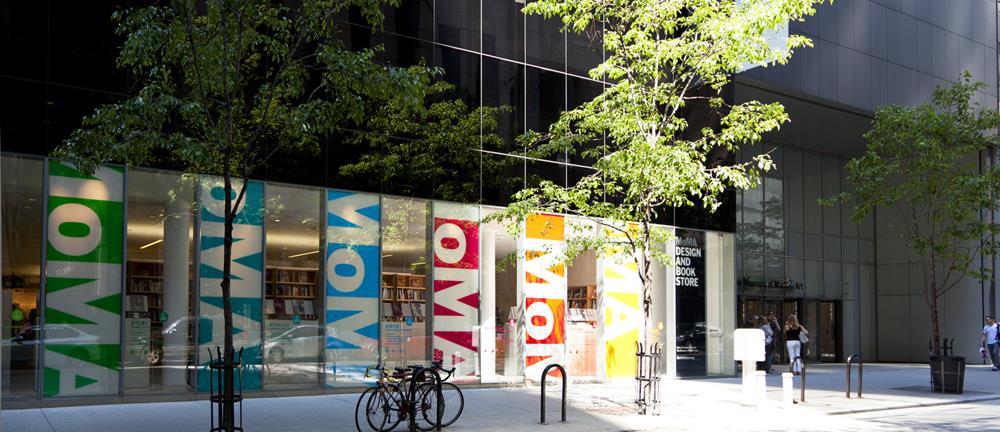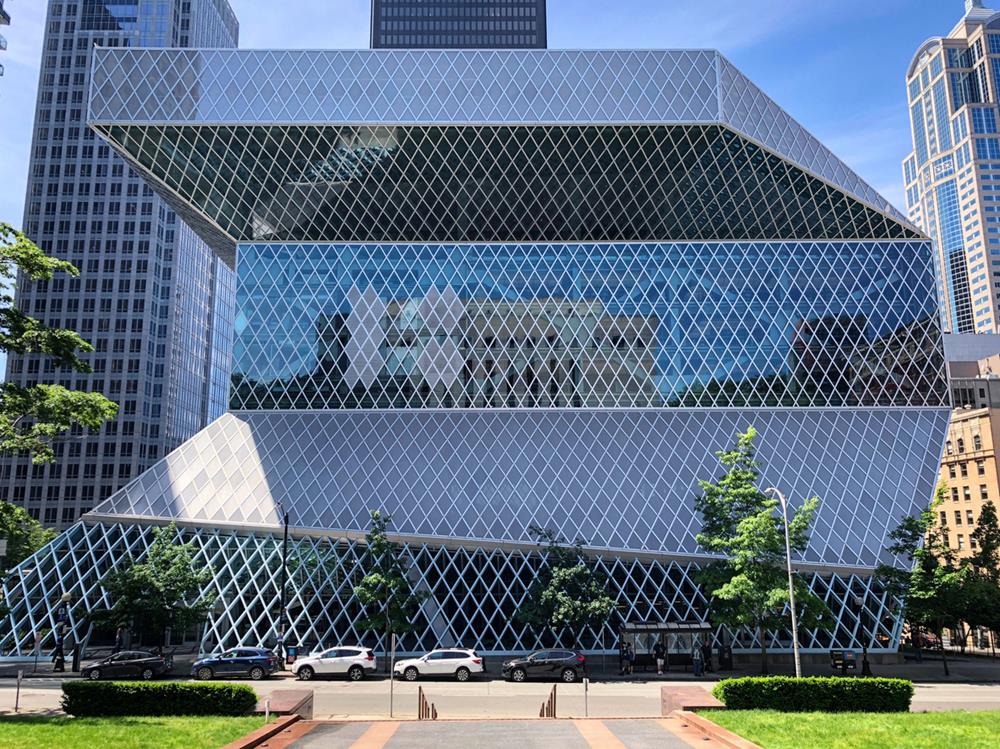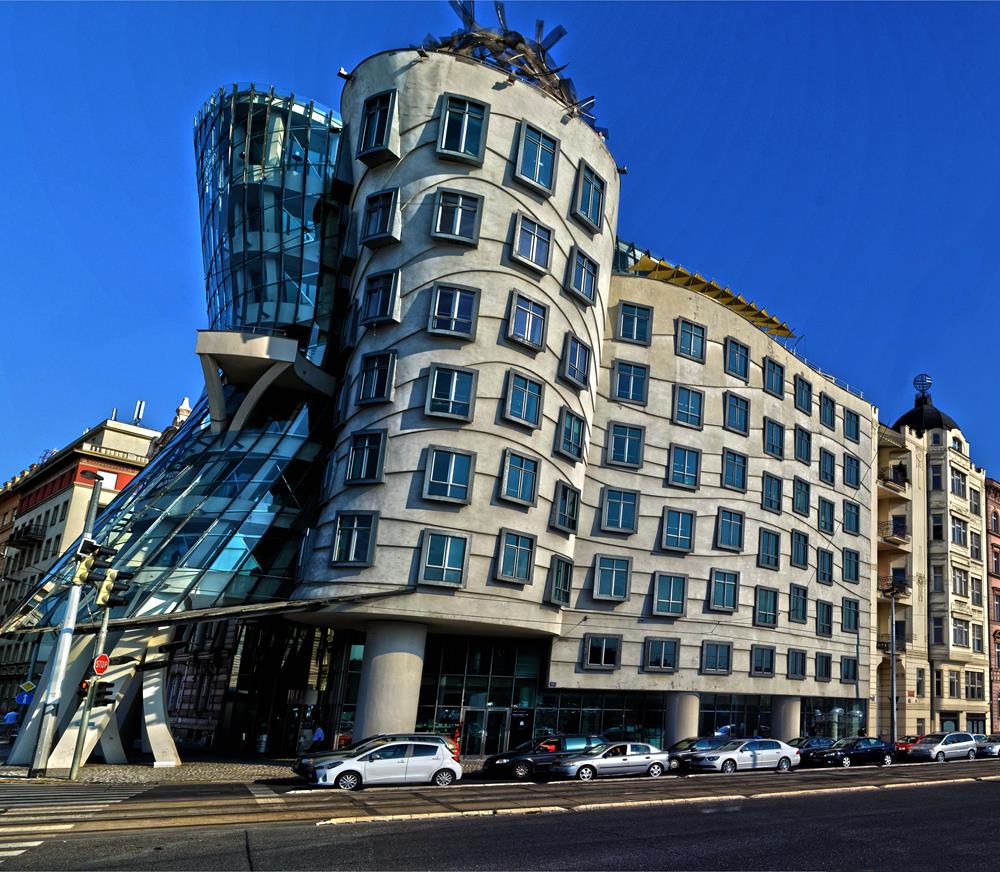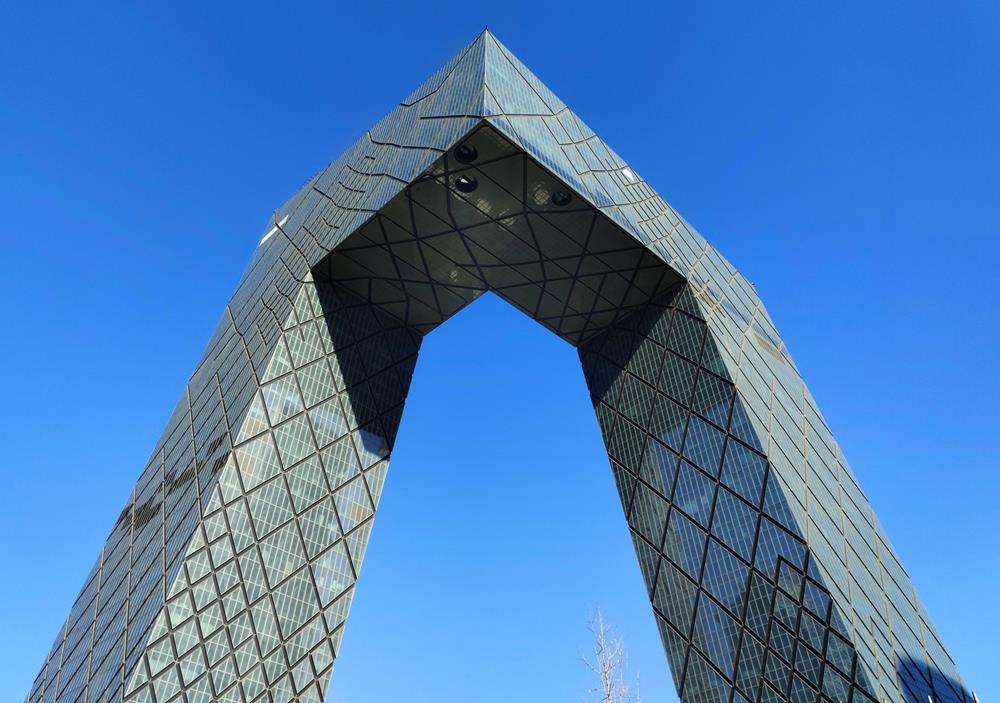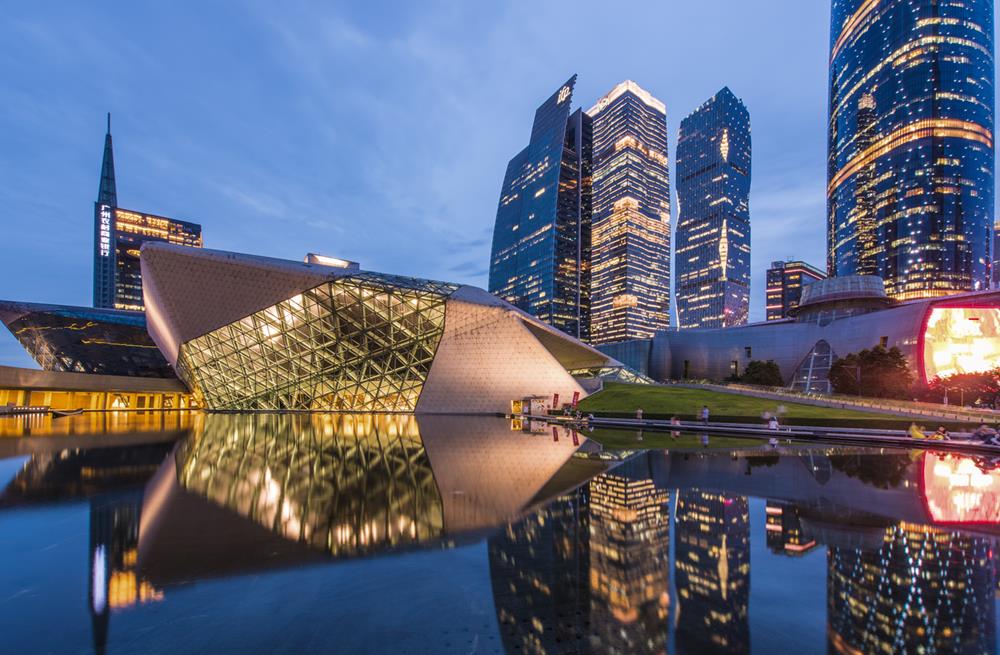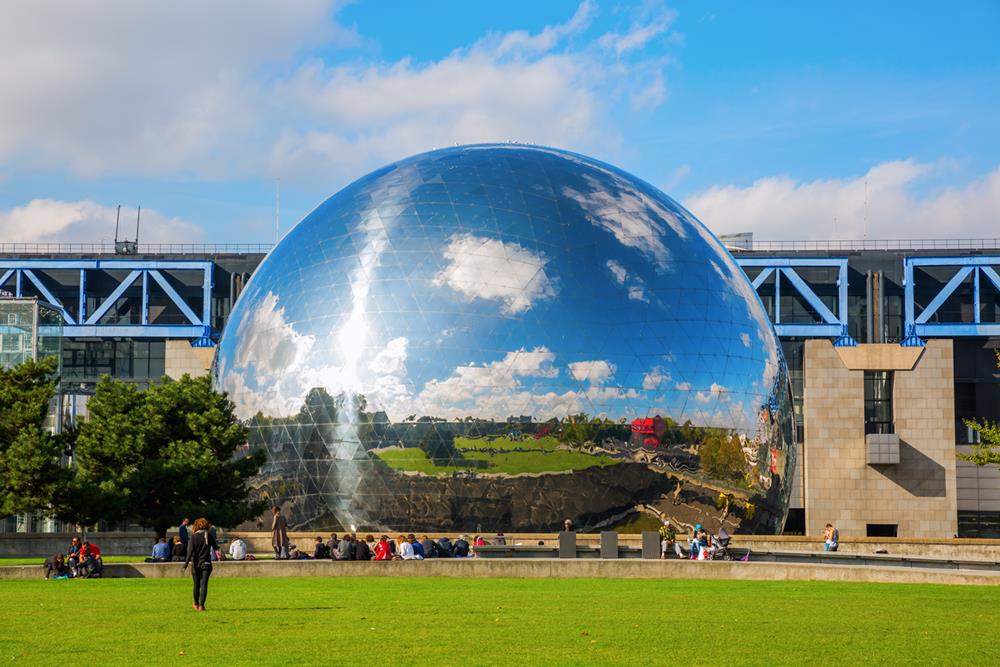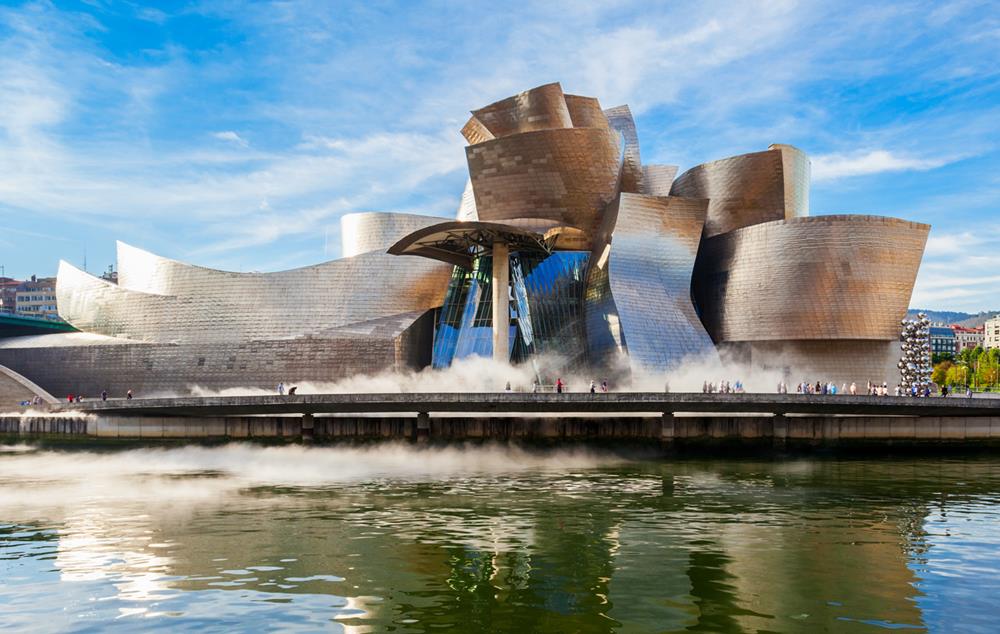Deconstructivism in architecture, also known as deconstructivist architecture, is a movement that emerged in the late 20th century. It is characterized by a fragmented style that distorts and dislocates architectural conventions through the use of non-rectilinear shapes which appear to distort and dislocate elements of architecture. The visual appearance of buildings that belong to this style is characterized by unpredictability and controlled chaos.
Deconstructivism Architecture
Even if youre an architectural expert or a novice fan of architecture, youve probably asked, What is deconstructivist architecture? The word deconstructivist is constantly underlined by Microsoft Word as if it doesnt exist. When applied to architectural theory, the philosophical movement deconstruction, from which deconstructivism emerged, becomes even more difficult to comprehend because structures are literally built by construction professionals. In contrast, deconstruction can mean demolishing a structure.
Unlocking the Meaning of Deconstructivist Architecture
When we talk about deconstructivism in architecture, we mean the breaking down or demolition of a built structure, whether for structural reasons or simply as an act of protest. Because of this, many people misunderstand the Deconstructivist movements ideas. Most people think of deconstructivist philosophy as a new architectural style or an avant-garde trend, but its just another way of thinking about architecture and society. It doesnt adhere to any rules or adopt any aesthetics and isnt a protest against a social problem.
Like most postmodern movements, deconstructivist architecture is more of an architectural rule-breaking style than a singular, cohesive concept. For deconstructivists, a building doesnt need to seem or feel uniform or arranged. Instead, they aim to design structures that can be disassembled into smaller, seemingly unrelated parts. A deconstructivist architect would depict this skyscraper in terms of the component shapes rather than attempting to fit them together into a cohesive framework. More juxtaposition and separation are preferable, wherein all the attention is focused on the individual.
History of Deconstructivist Architecture
Deconstructivism’s journey through the architectural landscape unfolded in distinct phases, each marked by pivotal moments, influential figures, and evolving design methodologies. This narrative delves into the movement’s inception, its crystallization in a landmark exhibition, and the subsequent diffusion of its principles across the global architectural community.
The 1980s – The Philosophical Genesis
The 1980s were a crucible for deconstructivism, incubating the movement in a milieu ripe for theoretical and practical innovation. As the decade progressed, a discernible shift occurred among architects who sought to transcend the limitations imposed by postmodernism’s eclectic and often nostalgic embrace of historical forms. Deconstructivism emerged as the antithesis to this approach, eschewing ornamentation in favor of a more radical exploration of form and structure.
Central to this new wave was the influence of Jacques Derrida’s deconstructive philosophy, which advocated for the interrogation and dismantling of established dichotomies and hierarchies. Architects, inspired by Derrida’s critique of linguistic and cultural structures, began to apply these deconstructive lenses to the realm of architecture. This led to a reevaluation of conventional architectural elements, resulting in designs that emphasized fragmentation, asymmetry, and a deliberate departure from traditional aesthetics.
The 1988 MoMA Exhibition – A Defining Showcase
The “Deconstructivist Architecture” exhibition at the Museum of Modern Art in New York, curated by Philip Johnson and Mark Wigley in 1988, marked a watershed moment for deconstructivism. This event not only brought the movement to the forefront of the architectural discourse but also legitimized its place within the broader cultural context. By featuring the works of architects such as Frank Gehry, Zaha Hadid, Rem Koolhaas, Peter Eisenman, Coop Himmelb(l)au, and Bernard Tschumi, the exhibition highlighted the diversity and dynamism inherent in deconstructivist practices.
Each architect, with their unique approach to design, collectively embodied the movement’s core principles—challenging traditional architectural norms, embracing complexity, and adopting a critical stance towards the notion of a unified, coherent architectural language. The exhibition served as a catalyst, inspiring a generation of architects and designers to explore the possibilities opened up by deconstructivist thinking.
Post-Exhibition – Expansion and Evolution
In the aftermath of the MoMA exhibition, deconstructivism began to permeate the architectural landscape more broadly, influencing both theoretical discourse and practical applications. The showcased architects, already on their trajectories towards international acclaim, became synonymous with the movement, each further developing their distinctive styles within the deconstructivist framework.
The 1990s and beyond witnessed the realization of iconic deconstructivist buildings, which served as tangible manifestations of the movement’s ideals. These structures, characterized by their innovative use of materials, structural ingenuity, and the blurring of conventional spatial boundaries, continued to challenge and expand the parameters of architectural design.
Deconstructivism’s Enduring Legacy
Deconstructivism’s journey from a theoretical underpinning rooted in philosophical inquiry to a globally recognized architectural movement underscores its profound impact on the field. The movement’s origins in the 1980s, marked by a departure from postmodernist conventions, set the stage for a radical reimagining of architectural form and function. The 1988 MoMA exhibition crystallized deconstructivism’s aesthetic and theoretical concerns, propelling its protagonists to international prominence. In the subsequent decades, the principles of deconstructivism have continued to inspire architects and designers, fostering a culture of innovation and critical inquiry that endures to this day.
Defining Features of Deconstructivist Theory
Deconstructivist architecture, renowned for its avant-garde approach to form and structure, is characterized by several distinct features that set it apart from more traditional architectural movements. These characteristics underscore the movement’s commitment to challenging conventional norms and pushing the boundaries of architectural design.
- Fragmentation: One of the most striking aspects of deconstructivist buildings is their fragmented appearance, which gives the impression that the structures have been deconstructed and then reassembled in a seemingly haphazard manner. This fragmentation is deliberate and carefully planned, often serving to disrupt the viewer’s traditional expectations of form and space. By breaking down and reconfiguring architectural elements, deconstructivist designs invite observers to experience space in new and unexpected ways, often leading to a more dynamic interaction between the building and its inhabitants.
- Non-rectilinear Shapes: Deconstructivist architecture frequently employs non-rectilinear shapes, eschewing straight lines and right angles in favor of curves, oblique angles, and surfaces that appear to warp and twist. This use of irregular geometries contributes to the sense of movement and instability often associated with deconstructivist buildings. The dynamic forms challenge the notion of static architecture, suggesting instead that buildings can convey a sense of motion and fluidity.
- Layering: Layering is another hallmark of deconstructivist design, where multiple layers and surfaces intersect and interact to create complex spatial relationships. This technique adds depth and complexity to the architectural composition, encouraging a more engaged and interpretive viewing experience. Layers may overlap, intersect, or weave through each other, creating a rich tapestry of forms and spaces that defy simple categorization.
- Material and Texture Contrasts: Deconstructivist architects often employ a juxtaposition of different materials and textures to enhance the visual fragmentation and complexity of their designs. The contrast between smooth and rough surfaces, transparent and opaque materials, and varying color palettes can intensify the building’s visual impact. This deliberate contrast not only contributes to the aesthetic disjunction characteristic of deconstructivism but also highlights the innovative use of materials in conveying thematic or conceptual ideas.
- Absence of Harmony: In a marked departure from traditional architectural values, deconstructivist buildings often eschew harmony, symmetry, and balance. This intentional absence creates a sense of dynamism and fluidity, suggesting that architectural forms are not bound by conventional rules. The resulting compositions are visually striking and often evoke a sense of controlled chaos, where the unexpected becomes a central theme.
The key characteristics of deconstructivist architecture—fragmentation, non-rectilinear shapes, layering, material and texture contrasts, and the absence of harmony—combine to create a style that is both challenging and captivating. By pushing the limits of form, space, and materiality, deconstructivist buildings invite us to reconsider our understanding of architecture and its potential to reflect and shape human experiences in the modern world.
Ten Famous Examples of Deconstructivist Architecture
Deconstructivist architecture prioritizes form’s expressive freedom over strict functionality, aiming to disorient and leave a lasting impression on those who visit these spaces. Often, the interior spaces hold even more intrigue than the exteriors. Below is a highlight of some of the most remarkable museum structures.
- Guggenheim Museum, Bilbao. Frank Gehry’s design for the Guggenheim Museum in Bilbao stands as a hallmark of deconstructivist architecture, with its mesmerizing curves and novel material applications that have transformed not only the concept of museum architecture but also significantly boosted the economy of Bilbao, an effect now famously known as the “Bilbao Effect.” The museum’s distinctive design has drawn in millions of visitors and hosted countless exhibitions, establishing it as both a pivotal city landmark and an iconic piece of global architecture.
- The Dancing House, Prague. The Dancing House, or “Tanc dm” in Czech, stands out in Prague’s historic urban fabric with its modern, dynamic design. Crafted by Vlado Miluni in collaboration with Frank Gehry, the building is a tribute to the dance duo Ginger Rogers and Fred Astaire, evoking the image of a dancing couple. Its distinctive shape, resembling a pair of dancers in motion, offers a stark contrast to the surrounding Neo-Baroque, Neo-Gothic, and Art Nouveau buildings, highlighting the deconstructivist penchant for challenging conventional architectural contexts.
- Jewish Museum, Berlin. Daniel Libeskind’s Jewish Museum in Berlin is a profound architectural statement that intertwines Berlin’s history, the contributions of Jewish culture, and the poignant absence of Jewish life in the city due to WWII. The building’s design, reminiscent of a fragmented Star of David, and its deliberate lack of windows create a unique atmosphere intended to evoke the Jewish experience during the war, symbolizing hope even in the darkest times.
- The CCTV Headquarters in Beijing, China. Designed by Rem Koolhaas and Ole Scheeren of the Office for Metropolitan Architecture (OMA), is renowned for its radical departure from conventional skyscraper design. Completed in 2012, the building’s most striking feature is its distinctive looped form, often described as a ‘Z’ shape that defies the traditional vertical tower. This innovative design integrates the entire process of TV-making into a single loop of interconnected activities.
- Parc de la Villette, Paris. Bernard Tschumi’s Parc de la Villette in Paris challenges traditional notions of park design by merging cultural elements with an urban landscape. This “cultural park,” as opposed to a “nature park,” is designed to provoke constant interaction and discovery, blending natural and artificial elements. While it has faced criticism for its vast scale and perceived lack of human-centered design, the park represents a bold deconstructivist approach to urban space, encouraging visitors to reevaluate their relationship with their environment.
- The Vitra Design Museum, Germany. It is a distinguished example of Frank Gehry’s deconstructivist architectural style, completed in 1989. Its standout feature is the array of deconstructed forms that defy traditional architectural geometry, creating a dynamic and sculptural presence. The museum’s white plaster facade is particularly striking, contrasting sharply with its industrial surroundings and highlighting the building’s unique shape through the interplay of light and shadow. Inside, the museum’s unconventional layout provides a captivating backdrop for its exhibitions on design and architecture.
- The Seattle Central Library. Designed by Rem Koolhaas and Joshua Prince-Ramus of the Office for Metropolitan Architecture (OMA), is a striking example of contemporary architecture. Completed in 2004, the building is celebrated for its innovative faceted glass and metal structure, which creates a transparent, light-filled interior. This geometric, crystalline form redefines the traditional concept of a library, blending functionality with cutting-edge design. The library’s unique aesthetic and spatial organization encourage interaction and exploration, making it a vital cultural and social hub in the heart of Seattle.
- UFA Cinema Center, Dresden. Emerging from the ruins of Dresden, the UFA Cinema Center by Coop Himmelblau addresses the diminishing presence of public spaces in European cities. The center is divided into the Cinema Block, housing eight theaters, and the Crystal, serving as a foyer and public plaza. This intertwining of public and private spaces aims to invigorate Dresden’s urban core, showcasing deconstructivism’s ability to redefine and energize public spaces through innovative architectural solutions.
- Walt Disney Concert Hall, Los Angeles. The Walt Disney Concert Hall in Los Angeles, designed by Frank Gehry, is another illustrious example of deconstructivist architecture. Its striking exterior, composed of sweeping stainless steel curves, creates an almost fluid appearance, as if the building itself is in motion. This iconic concert hall not only stands as a testament to Gehry’s innovative use of form and material but also enhances the acoustic experience within, blending form with function in a manner that challenges conventional concert hall design. The building has become a cultural landmark in Los Angeles, drawing visitors not only for its performances but also for its architectural brilliance.
- The Guangzhou Opera House. Situated in Guangzhou, China, is one of Zaha Hadid’s architectural masterpieces, completed in 2010. Its design is inspired by the natural landscape, resembling a pair of pebbles in a stream, smoothed by the flow of water. This fluid architecture embodies Hadid’s signature style of dynamic curves and futuristic forms, creating a visually stunning landmark that seamlessly blends with its environment. The opera house’s unique structure not only provides an exceptional auditory experience but also serves as a cultural centerpiece in the city, showcasing the potential of architecture to mimic natural forms while serving as a functional and inspirational public space.
Criticism of Deconstructivist Architecture
Functionality and User Experience
Critics often point to buildings like the Seattle Central Library by Rem Koolhaas and OMA as examples where the deconstructivist approach has raised questions about functionality. The library’s unconventional layout and unique spatial arrangements, while visually striking, have been critiqued for potentially compromising ease of navigation and user comfort.
Human Scale and Accessibility
The Jewish Museum in Berlin, designed by Daniel Libeskind, is frequently cited in discussions about deconstructivism’s relationship with human scale. The museum’s zigzagging form and intersecting voids create a powerful narrative experience but also raise concerns about the building’s ability to connect on a human level, with some visitors finding the space overwhelming.
Construction Challenges and Sustainability
Frank Gehry’s Guggenheim Museum Bilbao is often highlighted for its construction complexity. The museum’s titanium-clad forms are a testament to Gehry’s innovative design approach but also exemplify the high costs and technical challenges associated with bringing deconstructivist designs to life. Critics argue that such projects may not align with the growing need for environmental and economic sustainability in architecture.
Legacy of Deconstructivist Architecture
Interdisciplinary Innovation
The Vitra Design Museum by Frank Gehry is an example of deconstructivist architecture’s legacy in fostering interdisciplinary collaboration. The museum’s dynamic forms reflect Gehry’s interest in sculpture and visual art, showcasing how deconstructivist principles can create spaces that are both functional and expressive.
Technological Advancement
Zaha Hadid’s Phaeno Science Center demonstrates the synergy between deconstructivist architecture and advanced digital design technologies. The center’s fluid, organic forms were made possible through sophisticated computer-aided design and construction techniques, highlighting deconstructivism’s role in pushing the boundaries of architectural possibility.
Expanding Conceptual Boundaries
Bernard Tschumi’s Parc de la Villette in Paris exemplifies deconstructivism’s impact on rethinking the use and experience of public space. The park’s collection of “follies” disrupts traditional design norms and encourages visitors to engage with the space in new and unexpected ways, reflecting deconstructivism’s legacy in expanding the conceptual boundaries of architecture.
Hence, while deconstructivist architecture has faced criticism for aspects related to functionality, human scale, and sustainability, its contributions to interdisciplinary innovation, technological advancement, and the expansion of conceptual boundaries in architecture are significant and enduring. These projects serve as benchmarks in the ongoing dialogue between architectural form, function, and meaning.
Conclusion
Deconstructivist architecture represents a radical departure from traditional architectural design, characterized by its challenging of norms, its embrace of fragmentation, and its celebration of complexity. While not without its critics, the movement has undeniably expanded the possibilities of architectural form and expression, leaving a lasting impact on the field. As we move forward, the principles of deconstructivism continue to inspire and influence new generations of architects, ensuring that the spirit of innovation and experimentation remains alive in the world of architecture.


